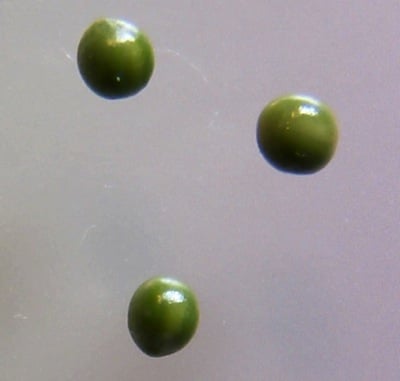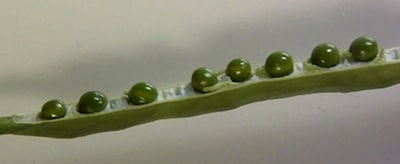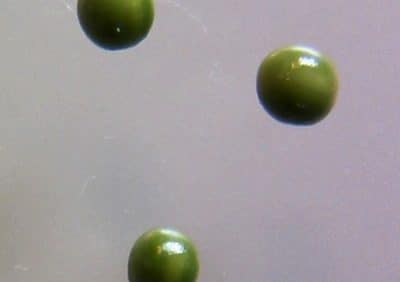This time of year, mature canola seeds can take a long time to turn brown or black. Growers wondering why seed color change is taking so long may want to check the fields again and look for these other signs of maturity:
All seeds are firm to roll. If the latest pods have seeds that are firm to roll, the crop can probably be swathed — even if there is no obvious color change. Seed can sit for a long time at firm to roll stages (which are basically mature) without turning color, especially if moisture is adequate and temperatures are cool, slowing the dry down process. It may turn color fairly quickly after swathing.
White/yellow banding. Green seed that is starting to turn color will show a faint band before it starts to turn brown. See the photos below.
No skin peeling. If the skin peels off when seed is rolled between the thumb and forefinger, then it’s not ready. A little flaking is OK, but if the white “onion skin” membrane peels right off easily on most seeds, then wait.
If all or most seeds have these characteristics, then the odds of those seeds curing properly in the swath are much better, meaning less risk to yield and quality if the crop is swathed to avoid fall frost risk. However, if no heavy frost risk is in the forecast, holding off on swathing and letting the plants continue to mature these seeds could further increase yield and decrease curing time in the swath. As long as the pods are pliable, there is no immediate risk of shattering.


